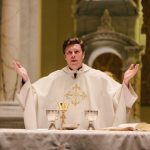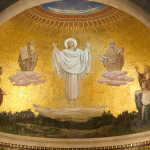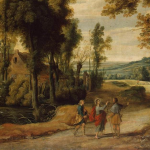
Fr. Stuart Crevcoure is parish pastor of St. Brigid's Parish in Tahlequah, and serves the Hispanic Apostolate of the Diocese of Tulsa & Eastern Oklahoma.
The Transfiguration & the Revelation of Essence
I visited the Church of the Transfiguration on Mount Tabor on a beautiful April day. Pilgrims were there to visit the holy site, of course, but the mountain was also…
The Road to Emmaus & the Breaking of Bread
The Emmaus story is one of the most intriguing resurrection appearances of Jesus to his disciples. Like the story of Mary Magdalene when she does not immediately recognize Jesus outside…



